This weekend, I headed to Philadelphia to meet up with about 10, 000 registered dietitians for the Academy of Nutrition and Dietetics annual meeting, AKA #FNCE (Food and Nutrition Conference and Expo).
Not the place you’d want to be caught eating twinkies and drinking soda…Ha!
I will tell you it is a BIG conference with many talks about health and nutrition–a bit overwhelming at times–too much to see and do all in just a few days.
But I focused on 2 subjects–digestive health and blogging.
I attended a talk on fructose but it was sponsored by Coca-Cola so I knew full well that it might be just a bit biased. 🙁 I always circle the talks I am interested in going to in my program book as there is so many to choose from and it keeps me focused!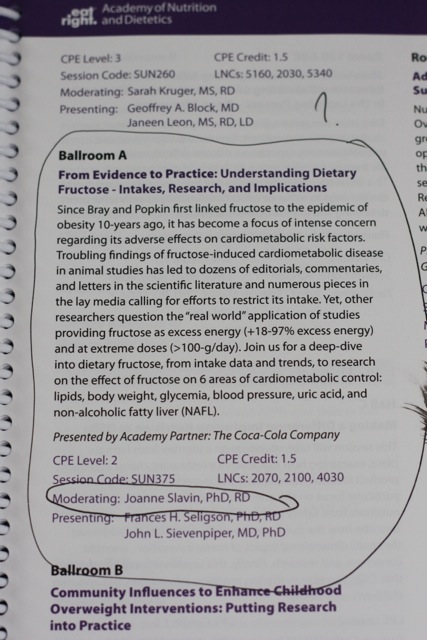
I did learn a bit about how much of this stuff [fructose] we consume as a nation– especially in our teenage population. And yes, it’s crazy too much. The average fructose intake in the US is about 49 grams per day per person.
If this was all from table sugar, which is 50% fructose and 50% glucose, that would translate to about 25 teaspoons of sugar!!
Ten percent of males ages 15-50 and ten percent of females ages 19-22 consume greater than 100 grams of fructose or about the equivalent of 50 teaspoons of sugar per day if it all came from table sugar. YIKES. And no surprise here, yes, the majority of fructose in the US diet comes from added sugar NOT fruits and vegetables. [SAD] 🙁 High amounts of fructose in the diet in this range are associated with adverse health risks.
As a reference, the American Heart Association recommends sugar consumption be limited to 6 teaspoons of sugar for women and 9 teaspoons of sugar for men per day. Learn more from the American Heart Association here!
I always attend any lecture that involves celiac disease and gluten expert, Alessio Fasano. Dr. Fasano is a world renown researcher and pediatric gastroenterologist at the University of Maryland specializing in the role of gluten in celiac disease and other disorders including autism. While many people believe that celiac disease causes digestive symptoms (and it can) the most common symptoms are fatigue and anemia. Carren Sellers, MMSc, RD also spoke at this session highlighting some of the challenges of following the gluten free diet. She reminded us that hidden gluten can be found in lipstick (especially the long-lasting), flavored coffees, imitation seafood and even French fries so education and vigilance with the diet is key.
I also attended an informative blogging session, moderated by Rebecca Scritchfield and 2 Food Network bloggers and registered dietitians., Dana Angelo White and Toby Amidor. This session provided key strategies to make your nutrition blog better.
But was so humbling and extremely exciting for me was that my blog was featured as one of the moderator’s favorites. {I had NO idea prior to the session} So while I was sitting listening intently for more blogging tips…low and behold a picture of my blog pops up on the big screen. Wow. Amazing. 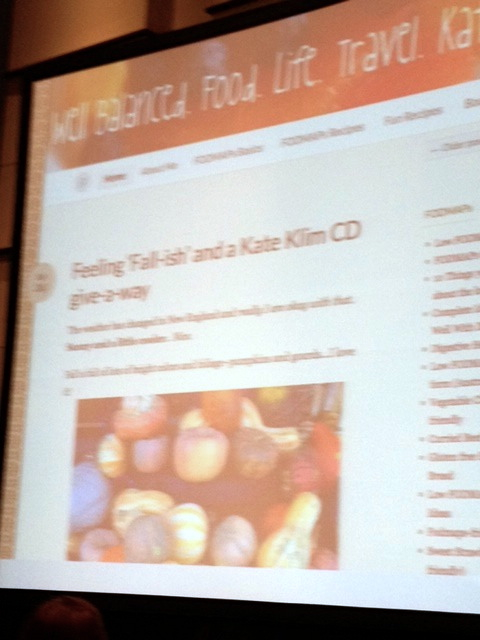
The moderator spoke a bit about my blog and my focus on #FODMAPs. She also mentioned that I include my dog, Lucy in occasional posts. Wow….Lucy is now famous! Ha! 🙂
Here is my girl, very happy to see her Mama who was away for a few days!
Another interesting talk was titled, Beyond Belly Aches: Identifying and Differentiating Between Allergies and Intolerances. I was unfortunately unable to attend this talk but was able to download the power point presentation so thought I would share a few points with you.
Food Hypersensitivity is an umbrella term that includes food allergy symptoms and food intolerance symptoms.
Food allergy symptoms are immune system mediated and can include: allergic rhinitis, atopic dermatitis (eczema), asthma, diarrhea, stomach cramping, vomiting, anaphylaxis, itchiness, uticaria (hives) and conjunctivitis.
Food Intolerance symptoms are non-immune system reactions include: migraines, headaches, joint pains, stomach aches, constipation, intestinal problems (diarrhea), hyperactivity, aggression, temper tantrums, sound sensitivity, fatigue and depression.
It is amazing how food intolerances can impact so many different parts of the body adversely for some individuals. It’s so important to find the right diet for YOUR body.
I have been to Philadelphia many times but this visit with Russ in tow, we sampled food from every corner of the city.
Breakfast-Always oats, nuts, strawberries and a hint of brown sugar. No need to get my sensitive stomach in an uproar first thing.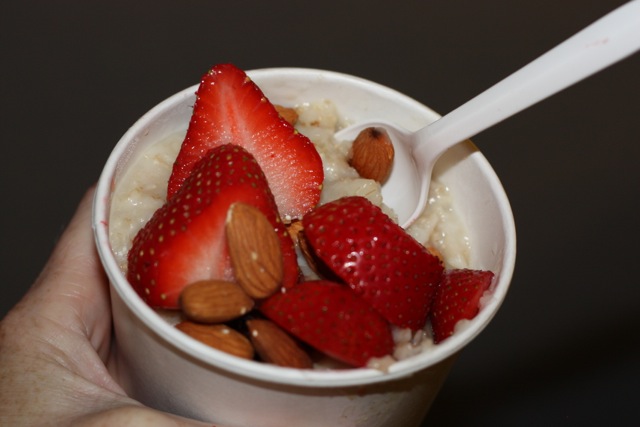
A 30 minute work out in the hotel gym always energizes me.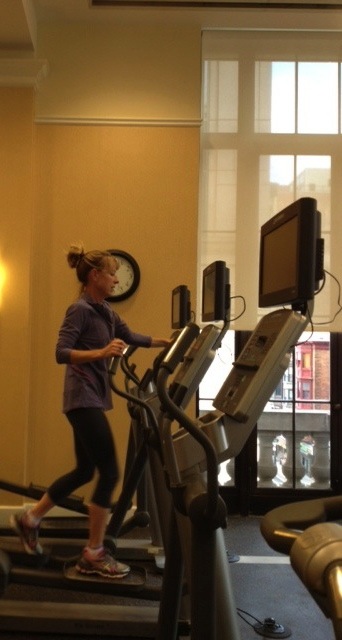
Since Russ and I hit quite a few restaurants, I wanted to share our favorites! Zavino Wine Bar and Pizzeria, Amis and Barbuzzo.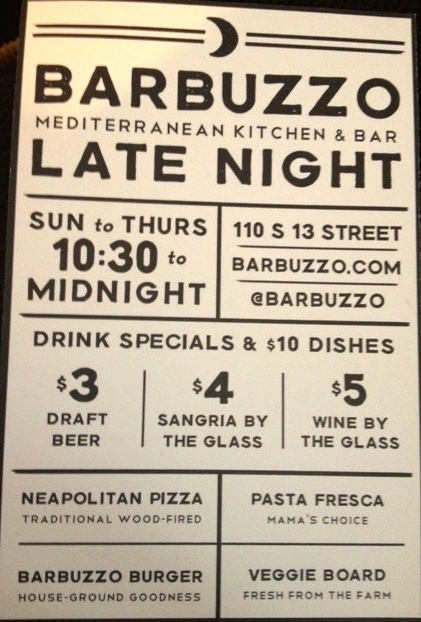
Barbuzzo has the most amazing salad with Tuscan kale, pistachio pesto, grapefruit and roasted beets. It was the best salad I have ever tasted. Is it low in FODMAPs? NO! But it was worth it. 🙂
We also enjoy Mercato…and were lucky to meet up with my nephew Brent and his fiancé Jen. A wonderful way to end my FNCE experience.
I have to say I was EXTREMELY impressed with the food and atmosphere at the restaurants….delicious and very hip and cozy.
Well, I am happy to be back home. And ready to get cooking again. So stay tuned for some recipes and thanks again for all your great recipe inspirations.
What’s your favorite snack on the run? Leave a comment for a chance to win a low FODMAP booklet–the latest from Monash-3rd edition!




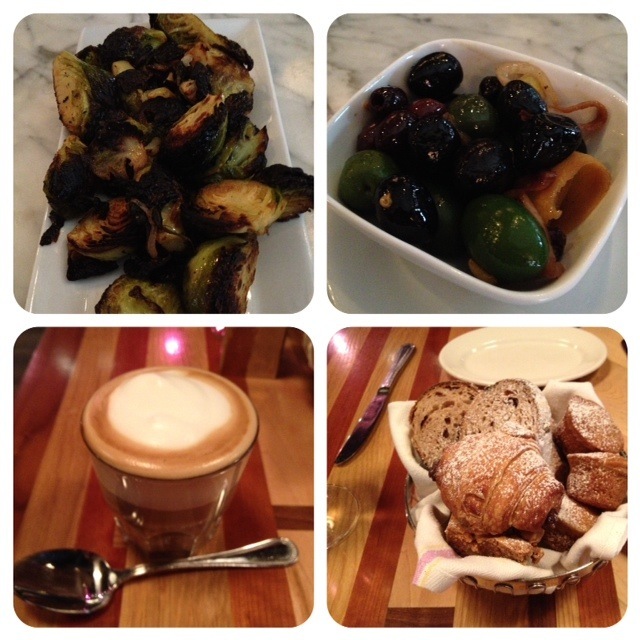
Ashley
I like to have some almond butter with some rice crackers. I have these little plastic containers I can scoop almond butter into and then I just dip my crackers in it and off I go! 🙂 Sometimes if I want something sweet, I’ll drizzle some maple syrup into my almond butter and add a little cinnamon. So good!
katescarlata
Ashley–I LOVE the idea of almond butter with maple syrup and cinnamon. YUMMMMMMM…Thanks for sharing!
Ashley
Almond butter and a banana! Or a handful of almonds with a few chocolate chips 🙂
Kerstin
Dried banana! I make my own and it tastes just like candy.
Lisa
A handful of almonds or a rice cake and peanut butter..sometimes with banana slices and/or chocolate chips added for fun.
Lauri
Banana or grapes or cheese – never all at the same time of course, too many FODMAPS!
Ashlee
Cheesesticks, since I’m not lactose intolerant, but I also sometimes mix raisins and cheerios to eat while I’m out.
Cath
I make gluten free zucchini, cranberry & walnut loaf or hummingbird muffins, package them individually, freeze them, & keep them for snacks at Uni.
Monisha
Coconut water ( like ONE guava or pineapple ) and almonds or walnuts.
Rachel
I love GF snack crackers with Jason’s Almond Butter packs! So easy to take with you somewhere at the last minute!
Kristen Lucisano
Almonds, easy snack to take. I am in search of a low fodmap snack high in protein and that doesn’t require refrigeration. Favorite refrigerated snack 2% yogurt or cottage cheese, blueberries and cinnamon 1/2 cup of each, the higher the fat content in the dairy makes it easier for me to digest.
Meredith
Lately, I’ve been loving the Kind Bar – the peanut butter and dark chocolate with protein. Not FODMAP friendly. So, for my son, his favorite go to snack is the Snyder’s gluten free pretzels in the snack size bags!
katescarlata
Yes, Meredith those Kind bars are tasty BUT NOT FODMAPs friendly.
Stephanie
Kate, thanks for the update. I am an RD in Canada, but realize I should join the ADA and attend this annual conference – lots of great learning to do. Thanks for sharing!
katescarlata
Yes….please join The Academy of Nutrition and Dietetics and if you are coming to Houston (FNCE) next fall let mw know!!
Megan
Kate, I am an RD and new to the low FODMAP diet! I just came across your blog and am so grateful! The diet worked well for me for the first few months, but lately I haven’t been tolerating the diet and have been so frustrated, especially being an RD. Your blog has given me new ideas on how to add variety to my diet, thank you so much!
Megan
katescarlata
Megan- glad you found my blog! Hope it is helpful to you! For tough to respond cases I really do recommend small intestinal overgrowth testing! I feel like a broken record but I find so many of my clients do test positive and do well post treatment!